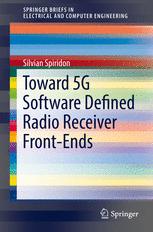

Most ebook files are in PDF format, so you can easily read them using various software such as Foxit Reader or directly on the Google Chrome browser.
Some ebook files are released by publishers in other formats such as .awz, .mobi, .epub, .fb2, etc. You may need to install specific software to read these formats on mobile/PC, such as Calibre.
Please read the tutorial at this link: https://ebookbell.com/faq
We offer FREE conversion to the popular formats you request; however, this may take some time. Therefore, right after payment, please email us, and we will try to provide the service as quickly as possible.
For some exceptional file formats or broken links (if any), please refrain from opening any disputes. Instead, email us first, and we will try to assist within a maximum of 6 hours.
EbookBell Team

4.3
18 reviewsThis book introduces a new intuitive design methodology for the optimal design path for next-generation software defined radio front-ends (SDRXs). The methodology described empowers designers to "attack" the multi-standard environment in a parallel way rather than serially, providing a critical tool for any design methodology targeting 5G circuits and systems. Throughout the book the SDRX design follows the key wireless standards of the moment (i.e., GSM, WCDMA, LTE, Bluetooth, WLAN), since a receiver compatible with these standards is the most likely candidate for the first design iteration in a 5G deployment. The author explains the fundamental choice the designer has to make regarding the optimal channel selection: how much of the blockers/interferers will be filtered in the analog domain and how much will remain to be filtered in the digital domain. The system-level analysis the author describes entails the direct sampling architecture is treated as a particular case of mixer-based direct conversion architecture. This allows readers give a power consumption budget to determine how much filtering is required on the receive path, by considering the ADC performance characteristics and the corresponding blocker diagram.